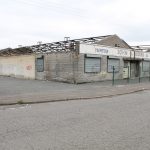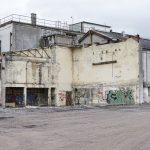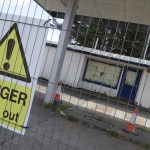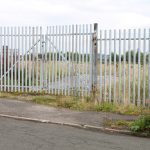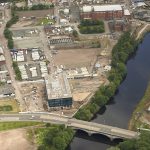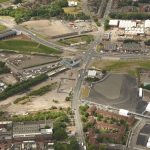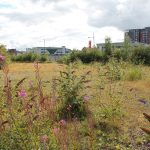Land and freedom
10 March 2020
Our recent Health Inequalities report gave a fresh young-people led perspective on why ignoring Scotland’s vacant land problem is not an option. Here Katherine Pollard, Scottish Land Commission Policy Officer, explains why children’s voices are so important in discussion of this issue – and how they’ve been included in the Commission’s recent work
Scotland has around 11,000 hectares of registered vacant and derelict land*, roughly twice the size of Dundee, or 9,000 football pitches. Around a third of the Scottish population lives within 500 meters of a derelict site. In deprived communities, that figure increases to 58%.
There is great opportunity in bringing these vacant and derelict sites back into use. How about turning these unloved places into green spaces, with many benefits to tackle climate change, and be social places full of activity and health benefits? What if these sites could be turned into homes, community hubs or businesses, making places thrive? The Scottish Land Commission is working to make more of our land and tackling vacant and derelict land is one of our priorities.
Living with blight
Children in Scotland’s recent report (click to read) on the role of place and community on health inequalities adds a powerful, fresh voice to the conversations about why ignoring Scotland’s vacant and derelict land problem is not an option. The research, led together with 15 young peer researchers from Glasgow and Dundee, explored how community and place affects health and wellbeing for children and young people.
It tells us that places that are neglected, poorly designed or lacking in amenities and green space affect the way children feel and behave. In particular, blight and abandoned spaces in communities can make people feel unsafe and could impact on mental health. These can restrict opportunities for children to play, exercise or socialise. Areas that have more damaged property might be labelled as a ‘problem’ which could add to stigma, affecting how children and young people who live there feel about themselves and how others view people who live there. The report makes recommendations to adults to:
“Deal with vandalism and regenerate abandoned spaces.”
This supports evidence from an investigation by the Land Commission which found that derelict sites can significantly impact health, the environment, economy and community wellbeing in an area (click to read). We have produced a toolkit to capture how a site can impact a community and the way they feel about these types of abandoned buildings or pieces of land (click to access). It is important to make sure this impact on communities is properly reflected when decisions are being made about an area.
Images courtesy of the Land Commission
What can be done?
The Children in Scotland report asks for an assets-based (or place-based) approach when looking at solutions. This means looking at what people in the area like, and using it as a starting point. There are lots of positive things mentioned by young people in the report about the areas and community that they live in and how it can benefit their wellbeing including parks and activities with friends and family
Genuine community engagement must take place when making decisions about land and it must work across all social groups to deliver improvements where they matter most. The Land Commission’s work and a My Toon Jam with Young Scot has shown that young people currently do not feel empowered or involved in decisions about their local landscape and community, but that they would like to be actively part of the discussions. We are working with Icecream Architecture to explore the attitudes and aspirations young people have for Scotland to help shape our next strategic plan. This work will also be used to support and engage more young people in decisions about land.
Other good news is that the Scottish Government has recently pledged to incorporate the United Nations Convention on the Rights of the Child (UNCRC) into law. Decision-makers will need to meet the rights children have under this convention, which includes things like the right to play and to be safe. The Planning (Scotland) Act 2019 also includes measures that will give children statutory rights to participate in local planning processes. These are all positive steps.
However, we still have a big task on our hands, as Children in Scotland’s report has shown. The size of the issue of derelict land and the potential these sites have to transform communities, and Scotland as a country, means we still need a national effort.
Currently no one has overall responsibility for this, so in 2018 the Land Commission – together with a wide range of organisations – set up a Taskforce to address this issue by coming up with ideas, new strategies and tools based on evidence and research to change Scotland’s approach to vacant and derelict land. The Children in Scotland report on Health Inequalities builds on this existing research and is a great example of the type of evidence that should be influencing big changes required in the way we currently think about place.
In order to do this, we need to collaborate across different sectors, support communities, encourage creative ideas and rethink the value of these sites – to make places healthier, happier and safer for everyone to live, work and play in.
Click here to find out more about Scottish Land Commission's work
*Vacant land is a land that is lying empty, unused but has potential to be built on or used at some point. Derelict land is land damaged from previous development that needs to be restored before being reused.
Health inequalities research launched
We've published research led by 10-18 year olds living in Glasgow and Dundee
Click to find out moreChildren’s and young people’s participation and engagement
A key aspect of achieving our vision that all children in Scotland have an equal chance to flourish is the inclusion and participation of children and young people in our work
Click to find out more
Evidence Bank
A unique resource which directly captures the voices of children and young people on a range of subjects
Click to visit the website